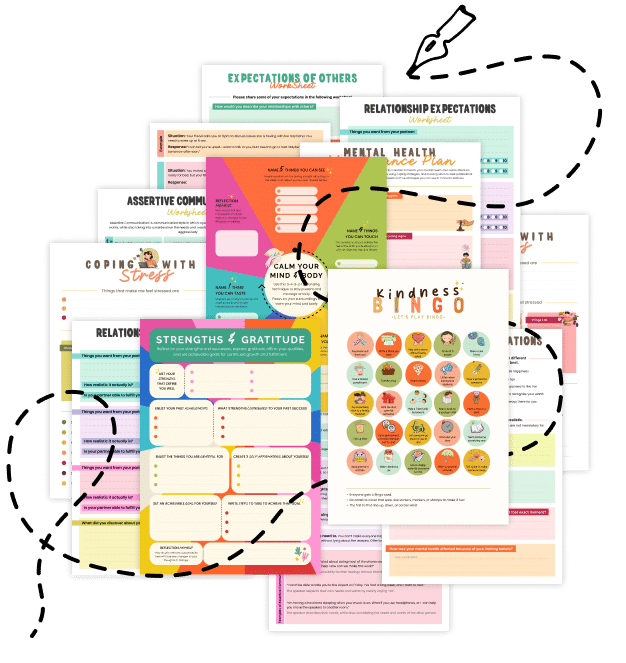20 Things You Should Know About the PQ4R Study Method
Boost your learning efficiency with the PQ4R Study Method! Discover 20 key insights into this proven technique—Preview, Question, Read, Reflect, Recite, Review—and learn practical tips to master your study sessions.
1. What Is the PQ4R Study Method?
The PQ4R Study Method is a structured approach to learning that enhances comprehension and retention. It stands for Preview, Question, Read, Reflect, Recite, and Review—a step-by-step process designed to make studying more active and effective.
2. Preview: Get the Big Picture
Start by skimming the material to get an overview. Look at headings, subheadings, images, and summaries. This sets the stage and helps you form a mental map of the content.
3. Question: Spark Curiosity
Before you dive into reading, generate questions based on the headings or introductory paragraphs. Ask yourself, “What do I expect to learn?” or “What questions do I have about this topic?” This primes your brain to seek answers.
4. Read: Engage Deeply with the Text
Now, read the material carefully. With your questions in mind, look for answers as you go. Active reading keeps you focused and enhances understanding.
5. Reflect: Think Critically
After reading, take a moment to consider what you’ve learned. How does the new information connect with what you already know? Reflection helps solidify the concepts in your mind.
6. Recite: Speak It Out
Test your understanding by reciting key points in your own words. This could be done out loud or by writing summaries. Reciting forces you to actively retrieve information, strengthening memory retention.
7. Review: Reinforce Your Learning
Finally, review the material and your notes. Go over the questions you formulated, the answers you recited, and any summaries you created. Regular review helps move information from short-term to long-term memory.
8. Builds Active Learning Habits
PQ4R turns studying into an interactive process rather than passive reading. By actively engaging with the material, you’re more likely to remember what you learn.
9. Improves Comprehension
Each step in the PQ4R method is designed to deepen understanding. Previewing and questioning create a framework, while reflecting and reciting ensure that you process and internalize the content.
10. Effective for Various Subjects
Whether you’re studying science, literature, history, or technical subjects, PQ4R adapts well to different types of material. Its structured approach provides clarity regardless of complexity.
11. Encourages Critical Thinking
By asking questions and reflecting on answers, you’re encouraged to think critically about the content rather than just memorizing facts. This leads to deeper insights and better problem-solving skills.
12. Enhances Memory Retention
The method’s emphasis on recitation and review leverages active recall—one of the most effective ways to cement memories. Regular practice using PQ4R can dramatically improve long-term retention.
13. Reduces Study Time Over the Long Run
Although the process might seem time-consuming at first, its efficiency pays off. With better comprehension and retention, you spend less time relearning material later.
14. Easy to Implement
PQ4R is straightforward and requires no special tools—just a textbook, notebook, and a bit of discipline. Its simplicity makes it accessible to students at all levels.
15. Adapts to Individual Learning Styles
You can tailor each step to suit your personal preferences. For example, if you’re a visual learner, you might incorporate mind maps during the reflect stage; if you prefer auditory learning, try reciting the information out loud.
16. Combats the Forgetting Curve
By engaging in frequent review, PQ4R helps counteract the natural decline in memory retention over time, ensuring that you remember key concepts when you need them.
17. Fosters Self-Monitoring
The method encourages you to monitor your own understanding and identify areas of confusion. This self-awareness helps you focus your study efforts more effectively.
18. Integrates Well with Digital Tools
Many study apps and online platforms can complement PQ4R. Digital flashcards, note-taking apps, and online summaries can enhance each stage—from previewing to reviewing.
19. Research-Backed Effectiveness
Studies have shown that multi-step learning strategies like PQ4R improve comprehension and retention compared to traditional reading. The method’s focus on active engagement is a key factor in its success.
20. Related Topics to Explore
- Active Recall vs. Passive Review: How actively retrieving information beats rereading.
- Spaced Repetition: The benefits of reviewing material at increasing intervals.
- Metacognitive Monitoring: Tracking your understanding to optimize study sessions.
- Cognitive Load Theory: Balancing the information you process for maximum retention.
Quick Tips for Using the PQ4R Method
- Set Aside Dedicated Study Time: Use a quiet, distraction-free environment for each step.
- Create a Checklist: Write down each stage (Preview, Question, Read, Reflect, Recite, Review) to follow systematically.
- Formulate Clear Questions: The better your questions, the more focused your reading will be.
- Record Summaries: Write or speak your recitations to reinforce what you’ve learned.
- Schedule Regular Reviews: Build review sessions into your study schedule to keep information fresh.
The PQ4R Study Method transforms your learning process by making it active, engaging, and highly effective. By previewing, questioning, reading, reflecting, reciting, and reviewing, you create a structured approach that enhances comprehension and boosts long-term retention. Whether you’re a student, professional, or lifelong learner, incorporating PQ4R into your study routine can help you master new information more efficiently.
Share this article with anyone looking to revolutionize their study habits. Embrace the power of PQ4R, and discover how a structured approach to learning can unlock your full potential!
Need a Professional Workbook Design Service?
From worksheets to activities, discover thoughtfully designed tools to support your mental health journey.

